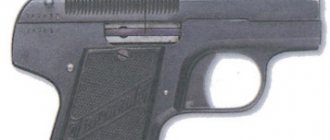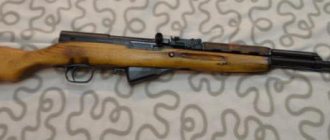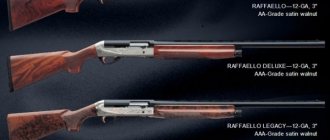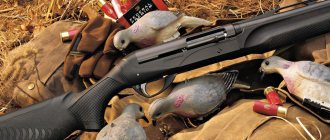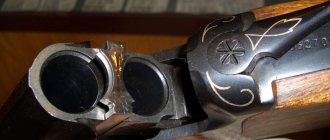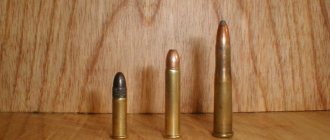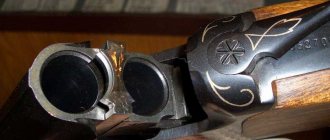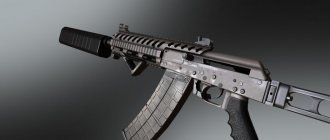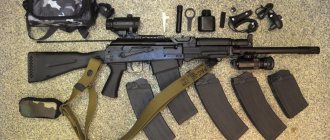Belgium is considered a leader in the production of first-class firearms. Today it is difficult to imagine any other country where people are interested in high-quality weapons. Experts in this matter advise paying attention to the Belgian gun. His country has been producing it for three centuries. It all started back in the 17th century. At that time, production began in a handicraft way, and only after some time did Belgian gunsmiths begin to produce it on machines. It was the use of special types of steel and the unique type of products that made Belgium a favorite in the arms field.
A little history
The production of guns in Belgium began in the 17th century. At first they were sold within the country, and only after some time they began to be sold abroad. At first the batches were small, but as they gained popularity they began to grow. It is known that in 1860 Belgium was able to sell weapons worth 11,891,960 francs. There are a lot of countries to which goods were exported. Russia is only in thirteenth place on this list. The top ten are headed by:
- Chile.
- England.
- Prussia.
- France.
Belgium now also sells a large number of weapons both at home and abroad.
Brand
In the production of Belgian hunting rifles, much attention was paid to the mark. They began to brand it in the 17th century, even at a time when weapons were made by handicraft. This was done so that every knowledgeable person could see whether this or that gun was of high quality or not. Since all gunsmiths had different levels of ability, the quality and reliability of each differed.
In 1672, it was decided to correct this circumstance and it was decided that every Belgian gun must pass a test before it was put on sale. Those models that passed the test were branded by applying a drawing on it, which depicted a column on the city’s coat of arms.
Larger inspections began during the time of Napoleon in 1810. It was tested at a station built in Liege. Firearms that were not tested were not branded and were not allowed for sale.
Over time, new laws were issued that spoke of more careful and strict control over the quality of weapons produced. Thanks to this, they gained fame and became a standard among their brothers. Now these rules are used not only in Belgium, but also in other countries involved in the production of firearms.
Belgian arms manufacturers
A huge number of factories in Belgium produce high-quality Belgian guns. Let's consider the most popular and widely known companies:
- State Factory (abbreviated as FN). Located in the city of Erstal, which is located near Liege. It produces 90% of hunting weapons in all of Belgium. The company produces serial models that include self-loading, smoothbore shotguns and double-barreled shotguns with vertical barrels. Known as "Brownings", named after the master who made them, John Browning.
- "Dumulin." This factory produces mainly hunting rifles and rifles with a horizontal barrel.
- "Lebo-Kuralli". One of the revered companies, founded in 1865. The first guns it produced were produced under the August Lebeau brand. Thanks to the masters of their craft, original works appeared, which, in their quality, were in no way inferior to their English counterparts of the highest class. Such Belgian guns were highly valued even outside the country. For example, in Russia, the presence of this model in a gun store was considered prestigious, and therefore many owners tried to get at least one copy for their sales premises.
- "Augustus Francotte". They were also highly valued among us. These models were produced in several variations, from cheaper models to the most expensive.
Unfortunately, in the early forties, a huge amount of Belgian weapons were confiscated by representatives of the NKVD and sent for melting down, so most of the first models of hunting weapons did not survive to this day.
Hunting Gun
Brancard. Model No. 8
Unlike other countries, in Russia there is a unique rating of Belgian manufacturers of hunting weapons, among other factors, such as safety, which determines its value on the secondary market. True, no one knows who, when and by what criteria compiled this rating...
For guns produced at the turn of the century, when the main Belgian arms “brands” were becoming established, it is still possible to build some kind of ratings, but for guns made between the world wars, it is completely pointless to do this, since the quality of all major manufacturers was approximately the same and same. The global crisis has made us forget about pride and past achievements. The main thing was to sell, no matter, under your own or someone else’s brand, as a whole or in parts... This does not mean at all that at that time there were no great masters of their craft. They were, but their names remained hidden behind the names of the companies and the names of the owners. Among the small manufacturers and artisans who worked for the armory, for example, was the magnificent engraver Hyppolite Corombelle, who later moved to live in Italy and founded an engraving school in Bologna. The price list of the largest distributor of Belgian weapons in the United States, the company H. & D. Folsom Arms from New York, contained the names of 200 different manufacturers from Liege and the surrounding area before the Great Recession. The only published list of the best arms companies in Belgium belongs to Marco Nobili and is contained in his book about Lebo-Couralli. Here's who he put on the same level with this company: E. Bernard, C. Braekers, L. Brancquaert, Britte, J. Bury, A. Cordy, J. Defourny, Dumoulin, A. Forgeron, A. Francotte, Browning, Galand , N. Lajot, Mahillon, M.L., E. Masquelier, Pirotte, F. Thirifays, F. Thonon, J. Thonon. Interesting list. It follows from this that Brancard and Defourny are producers of the same level. Well, let's figure it out...
Baron Raoul de Vrier, one of the best cage shooters of the late 19th century.
The first mention of Brancard dates back to 1897, when Baron Raoul de Vries, former secretary of the Belgian embassy in Washington, won the Grand Prix in cages in Paris. He shot from a Brancard gun. Louis Brancquaert was known in Brussels as the owner of a gun shop located on the way to the Boitsfort racecourse, not far from the Tir du bois de la Cambre shooting club, located in the Bois de la Cambre nature reserve. The location of Brancard's establishment at 202 Avenue de l'Hippodrome, at the intersection with the boulevard Général Jacques, was very successful. Rich colonists from the African colonies of the Belgian kingdom loved to spend their money at the hippodrome. They formed part of Brancard's regular clientele. The store sold bait and hunting rifles, all kinds of accessories, as well as Mullerit cartridges from Liege, which were advertised as one of the best for sport shooting.
Former store of Louis Brancard at 202 Avenue de Hippodrome.
By 1905, 30,317 francs in prize money, 3 gold medals and a silver cup had been won with Brancard guns. The Brancard trading house had a decent network of representatives; in Italy alone there were nine. Buyers were offered several models of well-crafted guns with the opportunity to additionally order a monogram, crown or coat of arms on the trigger guard. Model No. 1 was an exact copy of the Purde gun with self-opening locks. Model No. 2 was a copy of the Holland-Holland gun with locks on the side bases. Model No. 3 with Anson-Deeley locks and false boards had ejectors and a single trigger mechanism; it was positioned as in no way inferior to English guns of the same type. Model No. 4 repeated model No. 3, but had 2 triggers.
Model 4 "Brancard"
Model No. 5 is a “trigger” with a front-mounted mainspring. Model No. 6 repeated model No. 4, but without false boards. Model No. 7 had a patented system and 3 barrels: 2 “smooth” 12 or 16 calibers on top and an “express” .450 caliber on the bottom, as well as a rear sight 11 centimeters from the breech, which rose when switching to the lower barrel. When the gun was broken, the rear sight dropped automatically. Brancard patented a cage (cage) with a device for releasing pigeons during cage shooting called “Brancquaert`s pigeon - trap”. The design was protected by a patent type "SGDG", which meant "without government guarantees".
First page of Brancard's catalogue. In the center is a photograph of the Wellington shooting range in Ostend.
Sad shooting in Brussels. Beginning of the 20th century.
The Brancard trading house sold its cages throughout Europe. Louis Brancard himself was listed as the secretary of three pigeon shooting clubs: in Brussels (“Tir du bois de la Cambre”), as well as in the resorts of Spa and Ostend. These clubs united, first of all, wealthy representatives of the upper strata of society. Brancard was an arms dealer (called an armurier in French-speaking countries), not a master gunsmith (arquebusier). Then whose weapon bears the inscriptions and marks of Brancard? The answer to this question is obvious to me: almost all the known “Brancard guns” were produced by the arms manufacturer Antoine Joseph Defourny.
Genealogy of the Defourny gunsmiths.
The Liège Defournys are descendants of the gunsmith Antoine Joseph Defourny (1805 - 1873), who had 10 children. The eldest sons: Noël Joseph (1834 - 1918) and Gilles Joseph (1831 -1915) became gunsmiths, and son Jean (1850 -1914) became an arms dealer. Noel Joseph's family was equally large - 10 (!) children. Two daughters, both Margaritas, and a son Albert died in childhood. Two sons: Antoine Joseph Defourny (04/9/1862 - 08/19/1943) and Alphonse (Alphonse Defourny, 1870 - 1948) became hereditary gunsmiths, and son Noel Victor Jean became a state weapons controller. Gilles Joseph's family was not so large - 5 children. His two sons: Guillaume (1865 - 1916) and Jules (1871-1958) also became gunsmiths. Guillaume Defourny worked for Auguste Lebeau, and in 1896 he opened the company G. Defourny - Sevrin. In 1908, his brother Jules became a co-owner of the company. The company operated after the death of Guillaume Defourny until 1955. Guillaume's son, George (Georget, 1900 - 1973) was an arms dealer.
Antoine Joseph Defourny (junior)
We are interested in Antoine Joseph Defourny (junior). On April 28, 1891, he married Margarita Maria Castado. The family had 7 children. Two of them (sons Joseph, 1892 - 1976 and Noel, 1897 - 1977) became gunsmiths. In 1895, Defourny opened his first deluxe weapons workshop. It was located in Erstal on rue Petite Voie. In 1900, Defourny moved behind the railway to 31 rue Nicolas Defrecheux, where he opened a new workshop. In 1902, the address appeared: rue Champs de Foxhalle. In 1905 - another one at rue de Jupille, 291. In the same year, a machine shop was opened. An outdoor shooting range appeared in 1906. Today it is difficult to say how they were tied to the indicated addresses, but the shooting range could only be located outside the city, and it is quite possible that it was at rue de Jupille, 291. In 1911, the assembly shop was expanded and an underground shooting range was opened. In 1924 the machine shop was expanded. In 1927, an exhibition hall appeared. Since 1909, the numbering on Defrecheux has changed several times. Until 1959, the address remained: Defrecheux, 25-27. From 1944 to 1967, there was a parallel address “armurerie AJ Defourny S.A.” on rue de Foxhalle, from which we can conclude that perhaps the workshops were located there, and the plan for the establishment on rue Nicolas Defrecheux, dated 1905, remained on paper. Currently, a residential building facing the Rue Nicolas Defrecheux has been preserved; it can also be seen on the 1905 plan.
Erstal, st. Nicolas Defrecheux 25-27.
This is what the Defourny manufactory at 25-27 rue Nicolas Defrecheux should have looked like in 1905. Drawing from the 1930 catalogue. The chicken coop in the center is touching.
Manufacture Defourny. Mechanical shop.
Manufacture Defourny. Finishing and control workshop.
A customer like Brancard, who served wealthy cage shooters, was, apparently, a real godsend for the gunsmith, who at the age of 33 (1895) decided to open his own business and initially produced no more than 15 guns a year. The details of the collaboration between Defourny and Brancard are unknown, but it is obvious that it was mutually beneficial. Today we can only guess how Brancard’s connections helped Defourny himself, and whether they helped him at all.
Defourny at the international exhibition in Milan. 1928
In 1928, the government appointed him to represent the Belgian arms industry at the international exhibition in Milan. Defourny, along with other Liege gunsmiths, donated considerable sums to the needs of a special committee, which, together with the museum of weapons (Musée d'Armes), was engaged in preserving the historical heritage of Liege arms making.
Image of 2 Orders of the Crown (to the left and to the right of the AJD PATENT) on the guard of the Defourny shotgun.
Defourny had state awards: in 1913 he became a knight, and in 1928 - an officer of the Order of the Crown. The order has 10 degrees. Cavalier and officer are the fifth and fourth degrees in importance. A very strange situation, because Defourny did not produce military weapons and did not cooperate with the state on this topic. It is unlikely that he received awards for the development of automatic cocking (self-opening) shotguns, the patent dates for which (by year) coincide with the dates of receipt of the orders.
Drawings of a single escapement mechanism from Defourny's 1909 patent.
Defourny is credited with more than two dozen Belgian patents for inventions, including: three-barrel shotgun mechanism (1895), improvements in the three-barrel shotgun mechanism (1895), three-barrel shotgun mechanism with two triggers (1896), improvements in the ejector Holland (1898), mechanism of a shotgun with two barrels and one trigger (1900), improvements in the mechanism of a shotgun with two barrels and one selective trigger (1902), adaptation of an automatic ejector to a shotgun with external hammers (1902), adaptation of an automatic ejector to a shotgun system Purdey (1902), shotgun with vertically paired barrels (1905), reinforced locking mechanism (1906, 1907, 1919, 1920), improvement of the single trigger mechanism (1909), automatic cocking gun system (1913, we are talking about “self-opening” sidelock and boxlock), vertical shutter mechanism (1921), improvements to the vertical shutter with locks on the side bases (1922), double-sided vertical shutter (1922), improvement of the ejector of the Purdey system (1924), improvements in the automatic cocking system of the gun (1924, 1928), ejector mechanism vertical with locks on the side bases and double-sided locking (1928), vertical (1932, 1933, 1934), etc.
Defourny verticals.
Not all of Antoine Joseph Defourny's guns should be considered successful; this applies, for example, to its “verticals”. Such a gun appeared in 1905 - 4 years earlier than the famous Robertson and Woodward guns. Defourny used the Anson–Deely system. As a result, the trigger of the upper barrel turned out to be too large, and the small size of the trigger of the lower barrel and its short stroke, limited by the dimensions of the block, required a powerful spring, which caused rapid wear of the mechanism parts. There were problems with the design of the ejectors, and the appearance of the gun left much to be desired (pic. above).
Model 50 from G. Defourny-Sevrin is based on the 1905 Defourny over/under.
Defourny shotgun with removable Holland-Holland locks. Model 1930. Photo: S. Bozhok
Shotgun Defourny 20 cal. Model 1930. Photo: pugsguns.com
The premiere of the 1905 model took place in Ostend, and then the gun was shown in Monte Carlo. In subsequent years, Defourny improved his brainchild. In 1912, a modification appeared with reduced firing pin eccentricity and a single trigger mechanism with the ability to select the sequence of shots. In 1930, at the World Exhibition in Liege, a model with locks on the side bases of the Holland-Holland type (spring in front) was presented; On some guns the locks were quick-release. Defourny received a patent for this model.
Defourny model 1932: 1 - mainspring, 2 - cocking lever, 3 - cocking spring, 4 - spoke. Photo: D. Galavanov
Drawing from Defourny's 1935 French patent, which combined the Belgian patents of 1933 and 1934.
In 1932, a completely new patented model of the Defourny vertical appeared. Recently such a 16-gauge gun was imported into Russia. Barrel length is 700 mm, chamber is 70 mm, weight is 2.7 kg, there are ejectors, locks are located on the lower plate (trigger plate lock). The gun has only an upper locking unit with a transverse bolt that extends onto two protrusions at the end of the breech. The massive under-barrel hook, resting on an axis across the entire width of the receiver, has two grooves for cocking levers (2), pressed by springs (3). Cocking of the locks and pumping of the mainsprings (1) occurs when the gun is broken through the interaction of the gentle shoulders of the cockers (2) with the body of the hook inside the grooves. After the lock is activated, the trigger interacts with the spoke (4), its toe extends and, when the gun is broken, activates the ejector. The obvious drawback of this shotgun - too high a block - is a consequence of the cocking mechanism being located under the barrel block (like a shotgun with horizontal barrels). All three vertical models were offered to buyers. And yet, 25 years of modernization have not led to the appearance of an outstanding gun. I think the main reason was that Defourny designed his “vertical”, repeating the circuit design of the “horizontal”.
Zeroing in Defourny's weapon.
Defourny wrote in his advertisement that he specialized in the production of two types of guns: de luxe category and cage guns. At the same time, his desire to produce light guns is clearly visible. A 12 gauge over/under with 71 cm barrels could weigh 3.1 kg. 20-gauge shotguns were advertised as guns for ladies. All weapons were carefully sighted.
Shotgun Defourny 12 cal. has two numbers 9642 and 1240. Photo: bonhams.com
There are questions about Defourny numbering. On April 27, 1904, the civil court in Brussels heard the claim of the Westley-Richards company against Mahillon, from whom guns No. 1277 Defourny and No. 1790 Forgeron were seized on February 27, 1902 by expert Deneubourg (Forgeron), allegedly infringing Belgian patents of the British. Defourny and Forgeron's widow were co-defendants in the suit (Revue pratique du droit industriel. 1904). Regarding the Defourny gun No. 1277, the court found that the WR patent expired on March 26, 1900. The court rejected the claims against Mayon and Forgeron's widow. Meanwhile, the Defourny over/under No. 1134, shot in 1933, is known, and on the block of another over/under with a five-digit number and stamps of the same year there is number 1110. The question arises about the manufacturer’s numbering: how could a gun with the number 1277 appear in 1902, or Where did the number 1134 come from in 1933, for example? If we assume that these guns were shot and branded three decades later than they were made, say, in white form, then it turns out that Defourny began working on over-and-unders before 1902. However, in his 1930 catalog, the release date of the first shotgun with vertical barrels was given as 1905. The question, without a doubt, requires additional study, especially since “double” numbers are often found on other Defourny guns.
A 1956 Defourny shotgun with a Noel Defourny single trigger.
Noel Defourny in the 50s installed his patented single escapement mechanism with selector on verticals of his father's design, including the very first ones with Anson-Deeley locks. Shotguns similar to the first vertical Defourny were produced by the Defourny-Sevrin company (G. Defourny-Sevrin) and the A. Francotte company (Auguste Francotte et Cie).
Model No. 7 Brancard, also known as Model 1 Defourny.
From the 1929 catalogue.
Defourny's trademark "AJD PATENT" was registered on January 31, 1911 (re-registered on April 2, 1929) and had nothing to do with patents (brevets) for inventions. Under this brand, Defourny offered, for example, barrel steel (pic. above). From the 1929 catalog: “All special grades of steel that are used to make our guns are available to order. The steels on which we have a monopoly are regularly tested for tensile, bending and impact resistance. Exclusive sale to gunsmiths.” From the same catalog it follows that the company independently manufactured: model 1 - locks (batteries) in the tee block, for which Defourny received a patent (Un système de fusil hammerless à trois coups AJD PATENT breveté), rear sight and side safety, model 2 - locks on the side bases and an ejector, model 8 - locks and an ejector, model 19 - only an ejector, and so on.
National Factory (FN) shotgun and its lock.
FN shotgun under the Defourny brand. Photo: A. Bazylev
Defourny, like many other manufacturers, also used equipment from other manufacturers, such as, for example, the National Arms Factory (FN). With the appearance in its production program of a gun with locks on the side bases and an original cocking system, which the authors of the anniversary edition of the book about FN called the “Anson system of 1928,” the Defourny company began to assemble a similar gun under its own brand.
Shotgun model ARA with patented Defourny self-opening system. Photo: guns.ru
Shotgun model HAR with patented Defourny self-opening system.
In May 2008, a Brancard gun was put up for auction at Christie's, which, judging by the description, was a gun with Defourny's patented self-opening system.
If desired, traces of Defourny can be found on any Brancard gun. In this case, the inscription “AJ Defourny” on the inside of the block.
The same inscription is on the box of the gun assembled for Brancard by Joseph Defourny (son of Antoine Joseph Defourny) in 1927. Model 1 according to the Brancard catalogue. Self-opening Beasley-Purde system. Photo: steniron.com
Models 1,2,6,8,11,18,19,23,24,27,28,29 Defourny (pictures are clickable).
Here are the stages of his activity that Antoine Joseph Defourny himself noted: 1896 - presentation in Paris of a gun with 3 barrels, 2 triggers and an automatic sight, 1898 - presentation in Brussels of the first gun with an automatic ejector Defourny, 1900 - presentation at cages in Brussels of a single-trigger gun (I believe , that it was then that the acquaintance with Brancard took place), 1905 - release of the first Holland type gun in Liege (according to Defourny) and its presentation in Paris, 1905 - presentation of the first vertical gun on cages in Ostend, 1913 - presentation in Brussels of a gun with automatic cocking ( self-opening system), 1921 - presentation in Genoa of a vertical gun with locks on the side bases, 1922 - presentation in Paris of a vertical gun with locks on the side bases and a double-sided bolt, 1924 - presentation in Buenos Aires of a shotgun with automatic cocking, 1925 - presentation of a vertical gun in Budapest, 1927 - presentation of the vertical gun in London, 1929 - presentation in Warsaw, Budapest, Paris and Rome of the latest developments in automatic platooning, 1929 - presentation of the vertical gun (mod. 1930 with Holland type locks) in New York and Chicago, 1930 - presentation of this model at the World Exhibition in Liege, 1932 - presentation of a new vertical model in different European cities.
One can only wonder why no one saw before that the weapons presented in Brancard’s catalogs completely (even the drawings are the same) coincide with the weapons from Defourny’s catalogs. Everything became completely clear to me when I came across the Brancard over/under, which appears in the catalog as model No. 8, which in reality was... the already familiar Defourny over/under. It seems that Brancard managed to install this model at the court of the Spanish king, after which a corresponding inscription appeared in the catalog along with the coat of arms of the kingdom.
It’s too early to put an end to this story, especially since one of the characters turned out to be not a gunsmith at all. I can imagine the confusion in the minds of some gun lovers... Who to believe in this case? My advice: don’t trust anyone... except reliable stamps and documents.
Belgian 12 gauge shotguns
Among smoothbore shotguns, 12 gauge is especially popular. This is because this model is easier to handle. You can easily handle the size of the powder charge. There are also no restrictions when choosing a charge: bullets, buckshot, shot. Any types and numbers can be used.
Among the Belgian 12 gauge shotguns, the following models are widely known:
- "Walrein" ("Legrand"). This type is famous for its high quality steel.
- "Grand Rus". A distinctive feature is the fine engraving that completely covers the block.
- "Prince Albert" Minimal engraving applied to the sides of the boards.
- "Count Kodashev" Weapons with small patterns in the English style.
- "The Parisian Count". It has one escapement and a wide reinforced strap.
- "Colorado". Also has one descent. The rounded block is covered with a small pattern.
- "Boss Verre." Low-set barrel and small block. This model was released in memory of the late J. Verne. He ruled the company until 1982.
These are the most popular and widely known models of this caliber.
Belgian C.Clement trigger caliber 12/65 from the 1900s
Dear Evgeniy Gennadievich, please help me determine the year of manufacture of the gun and its manufacturer. The absence of the article “A” before “Liege” is confusing. Another thing that confuses me is “Manufacture d'Armes”, as it has a very general inscription. And, if it’s not difficult, everything you can say about it (tests, gunpowder for testing, etc.). I'm very happy with it and enjoy hunting with it, but really want to know more. Thank you in advance. Good luck to you! Ivanov
The 12/65 caliber hammer, shown in photo 1, is one of the many hunting models imported into the Russian Empire from Belgium at the beginning of the 20th century.
It is attractive to today's hunters not only for its Belgian origin, spectacular decor and elaborate design, but also for its strict trunks with narrow channels, which is very important for hunters.
Strict in the sense that optimal shot-fire performance is achieved when firing only certain cartridges.
This external hammer double-barreled shotgun was manufactured by Charles Clément from Liege in the 1900s and tested with smokeless powder at the Liege station, all the necessary markings are in place on the barrel block and block.
The full name of the company is Charles Clément Manufacture d'Armes (Charles Clemont, Arms Manufacturing) or C. Clément Manufacture d'Armes, as can be seen on the barrels of your example.
In the Kingdom of Belgium, the company occupied an average position among similar-scale enterprises and worked under the management of the founder for a relatively short time, but its hunting weapons were exported abroad, and this is how this trigger came to us.
The origin of your 12/65 caliber shotgun is confirmed by the full branding on the barrels. I note that in combination with the name, the city was often indicated on the barrels of Belgian guns, usually simply Liège or with the preposition à Liège (in Liege), as on your example.
The inscription “Manufacture d'Armes” on the barrels is marked and executed clearly, in accordance with all the rules for marking hunting weapons, so your confusion is unnecessary, it is part of the full name.
However, “à” is not an article, but a preposition, but it was not always indicated on Belgian guns. It is not on your gun, however, this part of the inscription is correct.
The company C. Clément Manufacture d'Armes produced mass-produced weapons of various levels, and your hammer is an example of at least an average category, judging by the quality of the metal work and the unique decoration.
The block, locking plates, upper locking lever, hammers and fore-end hinge are completely covered with engraving with floral patterns in the form of large acanthus leaves. This is one of the most popular designs in the decoration of hunting weapons.
The design is traditional for a trivial hunting trigger of the turn of the 19th–20th centuries, the locks are padded on the side plates, that is, with V-shaped springs on the front capes of the plates in front of the triggers.
There is a triple locking of the barrel block in the block - with a lower double frame of the Purdey system and an upper transverse bolt, on your example a square W. & Ch. Scott. The sighting bar is flat and straight, the cartridges are pushed in using an extractor; the forend, unfortunately, is not shown.
Photo 2 shows a similar Clément trigger with steel barrels, but with simpler engraving and a Greener top round bolt. It was offered in the “Price list of a gun store” of the 1900s by the Moscow company A.A. Bitkov. for 80 rubles; your double-barreled shotgun is slightly more expensive due to the engraving, square bolt of the W. & Ch. Scott and oblique side “cheeks” on the shoulders of the last.
The barrels of your gun are made of plain steel “Fluss Stahl” from the German concern Krupp from Essen; This is a common occurrence on mass-produced Belgian guns, when manufacturers took advantage of everything available in weapons technology in their country and neighboring ones.
It can be seen that the barrels are very powerful, the weight “P.1K641.2” is marked on the pads, that is, the block weighs 1 kg 641.2 g - quite a lot for an ordinary 12/65 caliber gun, and besides, with such a mass they should be long.
It is important that the barrels are “strict”, that is, with narrow channels, the diameters are marked on them: on the right 18.2 mm, this is the lower limit for 12-gauge smoothbores, and on the left it is even less than 18.1 mm.
The fact that the channel diameters are significantly smaller than the nominal 18.52 mm imposes certain restrictions on the choice of cartridges and cartridges.
The chambers are standard, the inlet diameter is 20.6 mm, that is, the outer diameter of the sleeves is standard. Barrels with such parameters, that is, large masses with narrow channels, are very thick-walled, they should withstand a greater number of shots compared to any 12/65 caliber model with barrels of nominal caliber parameters.
In order to somehow level out the difference between the narrow bores of the barrels and the internal diameters of the cartridges, it is necessary to select cartridges with smaller internal diameters. You need the thickest-walled sleeves, with a paper shell rather than a plastic one, which will ensure the greatest coincidence of the internal diameter with the bore.
The performance of shot firing will be stable, and the recoil will be minimal, since it will be possible to reduce the pressure surge when the shot shell passes from the cartridge case into the narrow bore. Let me remind you that, as a rule, the internal diameter of paper sleeves is 18.65–18.70 mm, but for this trigger you will need thick-walled, more “strict” sleeves.
It is important for hunters that the right barrel has a “cylinder” drill, which is especially valued by fans of hunting game birds; only the bore diameter is indicated on it, and there is no marking according to the possible choke.
And in the left barrel there is a choke constriction, as can be seen from the designation “Choke” stamped on it and the diameter of the muzzle reach is 17.4 mm, that is, the muzzle constriction is 0.7 mm in size, quite sufficient for hitting with shot at any hunting distances. Check the diameters of the bores and muzzle projections, as well as the weight of the barrel block.
The combinations of choke constrictions show that your trigger is a typical hunting weapon, and the significant mass of the barrel block confirms the possibility of use on a bench, more precisely on pigeon cages, popular at that time.
However, this gun can only be fired with cartridges of nominal power, which must develop a pressure of no more than 600 kg/cm2 using the crushing (destructive) method. This is an absolute requirement of the Liège testing station.
Follow these conditions and your 1900's 12/65 C. Clément hammer will still last. Nevertheless, it is worth paying attention to the traces of inept attempts to disassemble the gun; the effects of wear and tear are also visible.
It is not clear what happened to the under-barrel hooks, or the photographs are mediocre, or the surface is corroded, or they are overlaid on the left side, which is very undesirable, so the looseness of the barrel block is removed in a more complex way.
And now, in more detail about the company C. Clément Manufacture d'Armes and its hunting weapons, in order to more fully imagine the position of your hammer in the arms world, for which I will use the corresponding chapter from my book “Hunting and sporting weapons of Belgium.”
The mass hunting weapons of the affordable or medium category produced by numerous Liege companies differ little. In such conditions, arms manufacturers can only stand out by producing mass-produced inexpensive models with very good combat performance.
So the company C. Clément Manufacture d'Armes managed to master the technology of inexpensive fittings, including large-caliber ones, along with, of course, numerous smooth-bore guns, so that contemporaries often called it a specialist in rifled weapons.
Belgian 16 gauge shotguns
Among these models of firearms, the Browning Auto 5 is very popular and famous. This model was developed in 1898, but weapons of this type were not immediately produced, since most arms companies believed that 16-gauge guns were not promising and no one would buy them.
But the FN company did not succumb to pessimistic forecasts and began producing a new type of hunting rifle. The first ten thousand copies were sold in just one year. This model was extremely popular and was sold for a hundred years.
Depending on the year in which the model was released and the edition, the Browning was equipped with:
- trunks, both with and without sights;
- chokes (replaceable or fixed);
- trunks of different lengths;
- butts (semi-pistol or straight);
- Various finishes on the receiver and wooden parts.
In a word, the 16-gauge Browning has proven itself to be an excellent fighter, made of the highest quality steel. Thanks to this, it has excellent both ballistic and mechanical features.
Thus, Belgian weapons, due to their quality and reliability, have gained immense popularity among hunters and not only.
Belgian smoothbore weapons
Alexander, thanks for the answer. Tell me where I can read and look about the “Frankot” models of the beginning of the century. Sincerely, Vladimir
What exactly are you interested in?
Couldn't I take a look at page 36/37? From this wonderful catalogue. I would be very grateful to you. With respect, Roman.
THANKS A LOT. With respect, Roman.
Either in Gladkostvol or in this topic, IMHO the author will not mind.
Hello, dear editors!
Being a regular reader of your wonderful newspaper, I decided to ask you. In No. 50 for 2000, I read with interest and pleasure the article “On the marks of Belgian guns.” The fact is that for quite some time now I have had a gun in my hunting and weapons arsenal, which at one time belonged to my grandfather. From my father’s stories, I know that my grandfather bought it somewhere in 1911 in Russia at the Nizhny Novgorod fair and affectionately called it “my Belgian”.
Henry Pieper The opening of every hunting season in the Moscow region certainly begins with the fact that I take this particular gun with me (as a kind of lucky sign), and not a single hunt has ever been left without trophies. The first woodcock, duck and even a brown hare were killed with this gun.
With your help, if possible, I would very much like to find out from the marks and inscriptions on the gun how old this truly unique creation of human hands is. After all, this is the fourth generation of hunters (and my son also joined the hunt and has already chalked up the first hazel grouse in his life, caught by his great-grandfather’s “Belgian”).
A little about the gun. 16-gauge double-barreled shotgun with horizontal barrels, central firing, hammer-fired, with a walnut stock. Judging by the inscriptions on top of the barrels, it was made by a master and registered in the membership card in the name of his grandfather on May 21, 1924 as “2 s. c-b." and in the column “Factory or surname of the master” the entry is Piper and factory NN 2418. The weight of the gun is 2.8 kg.
I load the cartridges for shooting myself into 16-gauge brass cartridges, using “Falcon” gunpowder, selecting the charge within 1.7-1.8 g and shot (all NNNN) from 24-27 g.
Perhaps there is an opportunity to find out something about the master himself and the school of gunsmiths to which he belonged, making such wonderful weapons.
You have the most traditional hunting rifle for Russian hunters of the late 19th and early 20th centuries. It was made at the largest factory in Belgium at that time, Henry Pieper. It produced mass-produced inexpensive weapons, which were readily purchased by middle-income hunters in Russia. Their cost approximately corresponded to the monthly salary of a skilled worker or small employee.
All Russian trading companies at that time necessarily had in their assortment various Belgian hammer and hammerless guns, and most of them were cheaper than domestic guns of the same class, for example Tula hammers, to which they were inferior in quality and level of finishing. The fact is that there were not enough domestic hunting weapons in Russia at that time, and the Belgian arms industry filled the Russian market with its inexpensive guns. Not all of them were of good quality; contemporaries believed that cheap Belgian weapons were below any criticism, and recommended paying a little extra and preferring at least Tula hammers in central Russia. Of course, the Piper factory also produced expensive guns in single copies, which created fame for the Piper company in Russia at the end of the 19th century.
Henry PieperG. Pieper was born in Westphalia in 1840, and at the age of nineteen he moved to the city of Liege. Soon in 1866, he opened his own company in the suburb of Liege, the town of Herstal. Once upon a time it really started with the first guns assembled by Pieper himself, then it expanded and turned into a modern enterprise, by the standards of the 19th century. The company was famous for being one of the first in Europe to apply technology based on the principle of interchangeability of parts, which had been well mastered in England by that time, and created mass production of hunting rifles in Belgium. The company repeatedly changed its form of ownership, owners and name and ceased operations only in 1957.
It should be noted that there was another Belgian gunsmith, his namesake, Nicolas Pieper, who dealt only with army weapons. He also had his own company in Gerstal, but it produced only automatic pistols and never had anything to do with the production of hunting weapons.
Pieper's first hunting rifles are not of particular value; they are crude guns of undeveloped design, common to the second half of the 19th century. Of these, only guns with the first preserved inscriptions and marks of Pieper are of interest to collectors, but they never arrived in Russia. He did not belong to any school of gunsmiths, and in fact there were no such schools. He was the largest European gunsmith and organizer of arms production of his time. Each weapons center, for example in Suhl in Germany, Liege in Belgium, Saint-Etienne in France, Tula and Izhevsk in Russia, and so on, adhered to one or another tradition.
Pieper's guns were distinguished by serial assembly, matching the products of other Belgian serial manufacturers in terms of assembly accuracy and quality. But in Russia there were the most of them, and thanks to this, many of them were preserved and brought to us the style and level of weapons production at the turn of the 19th-20th centuries. In total, before the First World War, Pieper's company imported more than half a million hunting rifles and other hand weapons to Russia. The preservation of the hunting rifle in the fourth generation of hunters is entirely your fault.
The most numerous was a gun with the brand “Bayard”, which was stamped with the image of a horseman with a spear and the barrels for which were made of the same grade of steel. It was so numerous that all the hunters I knew in Moscow and other cities owned such a gun or were at least familiar with it. At one time I had a 16-gauge Piper Bayard trigger with 70 mm long chambers with locks on the halves of the side boards. Such locks are also called “Liège” locks, as they are found on all inexpensive Belgian triggers. The stock had a semi-pistol-shaped neck and a protrusion under the cheek. But my gun was released later than yours, as it had the mark of shooting with smokeless powder, mandatory after 1924. The best weights for it were 1.8 g of Sokol gunpowder and 28 g of shot.
